Understanding these omnichannel failure examples is not about pointing fingers but about learning from past errors. Each case of failure sheds light on the complexities of implementing a truly integrated omnichannel approach. By examining these examples, businesses can better navigate the intricate omnichannel landscape, avoiding common pitfalls and steering towards more effective and cohesive customer engagement strategies.
Join us as we explore these lessons in detail, providing you with the foresight needed to execute your omnichannel strategies without falling into the same traps. Let’s dive into the world of omnichannel failure examples to extract valuable lessons that could safeguard the future of retail.
Table of Contents
- Anatomy of Omnichannel Failure Examples
- Omnichannel Failure Examples: Case Studies
- Technological Challenges in Omnichannel Implementations
- Strategic Missteps in Omnichannel Planning
- Organizational Challenges and Cultural Resistance
- Executional Missteps and Failure in Following Plan
- Recovery and Rebuilding After Omnichannel Failures
- Best Practices for Avoiding Omnichannel Failures
Anatomy of Omnichannel Failure Examples
The landscape of omnichannel marketing is fraught with challenges that, if not navigated carefully, can lead to significant failures. These omnichannel failure examples stem from a variety of root causes, which can broadly be categorized into strategic, technological, executional, and organizational failures. Each type of failure impacts customer experience differently, often leading to a ripple effect that can tarnish a brand’s reputation and its financial standing. Below, we explore these categories in depth, understanding their unique characteristics and the consequences they have on the customer experience.
Strategic Failures
Strategic failures in omnichannel initiatives occur when the foundational planning and decision-making processes are flawed. These failures often stem from a misalignment between the business’s objectives and the actual needs or behaviors of their customers. For instance, a company might invest heavily in an eCommerce platform without considering how their target customers prefer to shop, or they might launch a mobile app that doesn’t integrate well with their physical store experience. These omnichannel failure examples show a lack of understanding of market dynamics and customer expectations, leading to reduced customer engagement and lost sales opportunities.
The impact on customer experience is direct and detrimental. Customers faced with a disconnect between different shopping channels may find it frustrating and are likely to seek more cohesive experiences elsewhere. The strategic missteps convey a message of a brand that does not understand or value customer preferences, leading to diminished loyalty and trust.
Technological Failures
Technological failures refer to the shortcomings in the IT infrastructure and tech tools that support an omnichannel strategy. These failures can include everything from poor data integration across channels to outdated or buggy software that hampers user interactions. For example, if an online retail system does not update inventory in real time, it can lead to situations where products appear available online but are out of stock when the customer tries to purchase them. Similarly, failures in CRM systems can prevent businesses from providing personalized services to repeat customers, a key element of successful omnichannel strategies.
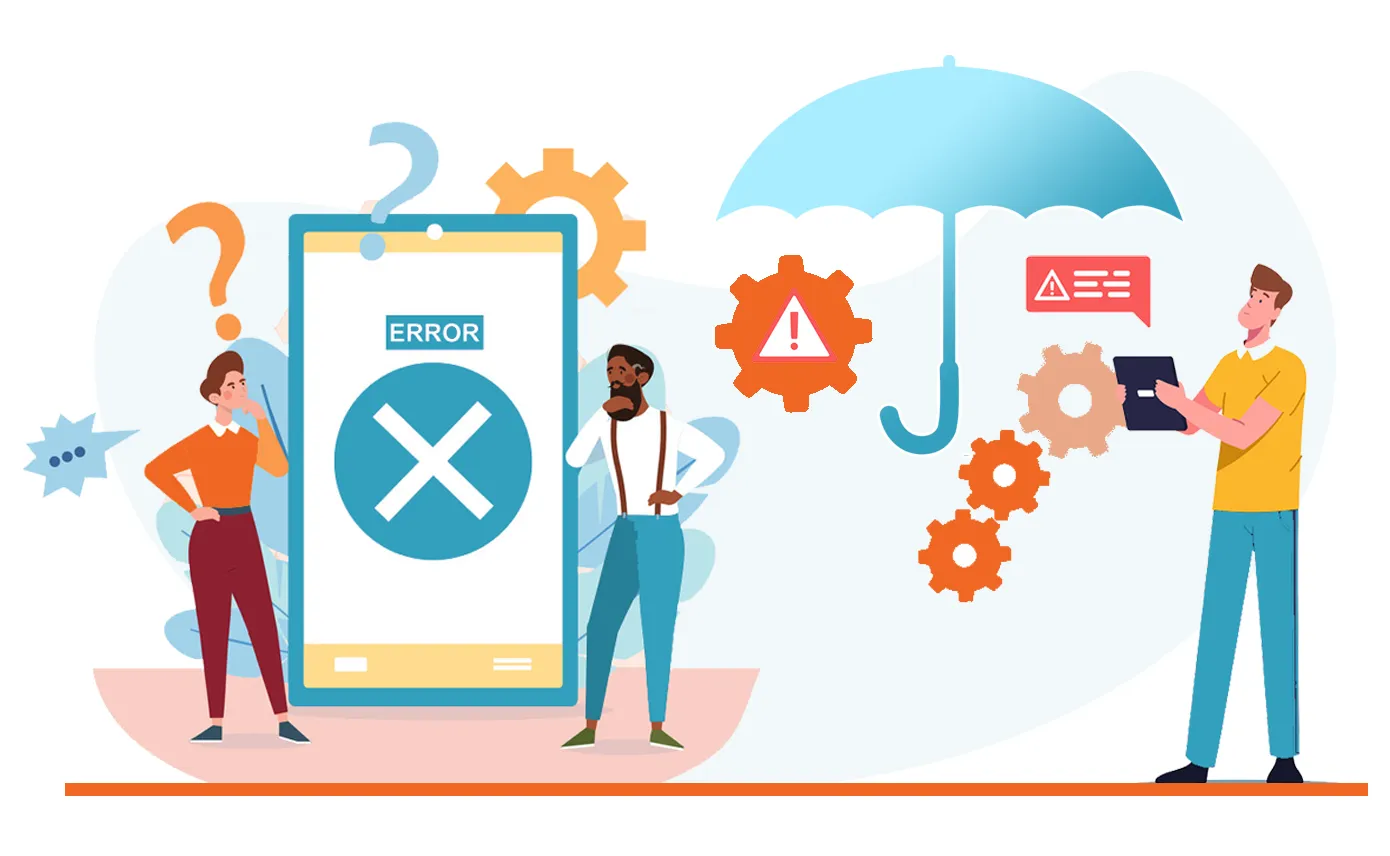
These technological glitches can severely degrade the customer experience by causing inconvenience and frustration. When customers encounter technical issues, whether it’s during the checkout process, while browsing products, or when interacting with customer service, their overall perception of the brand suffers. This leads to a decreased likelihood of repeat business and negative word-of-mouth.
Executional Failures
Executional failures in omnichannel strategies are characterized by poor implementation of well-laid plans. This can include everything from inadequate staff training on new digital tools to mishandling of customer inquiries across different platforms. An example might be a retail store promoting an online check-in option for faster service in-store, but the staff at the store are unaware of the promotion or untrained on how to process check-ins efficiently.

The impact on customer experience is immediate and often leaves a lasting impression. Customers expecting a smooth transition between online and offline touchpoints are met with confusion and delays, which can diminish the perceived efficiency and reliability of the brand. This often results in direct loss of sales and potentially long-term damage to customer relationships.
Organizational Failures
Organizational failures are perhaps the most complex, involving issues related to the company’s structure, culture, or internal communications. These failures manifest as silos within the company that prevent effective communication and coordination necessary for omnichannel success. For example, if the online team is not in sync with the in-store staff regarding promotional activities, it can lead to inconsistent customer messages and offers, creating confusion and dissatisfaction.
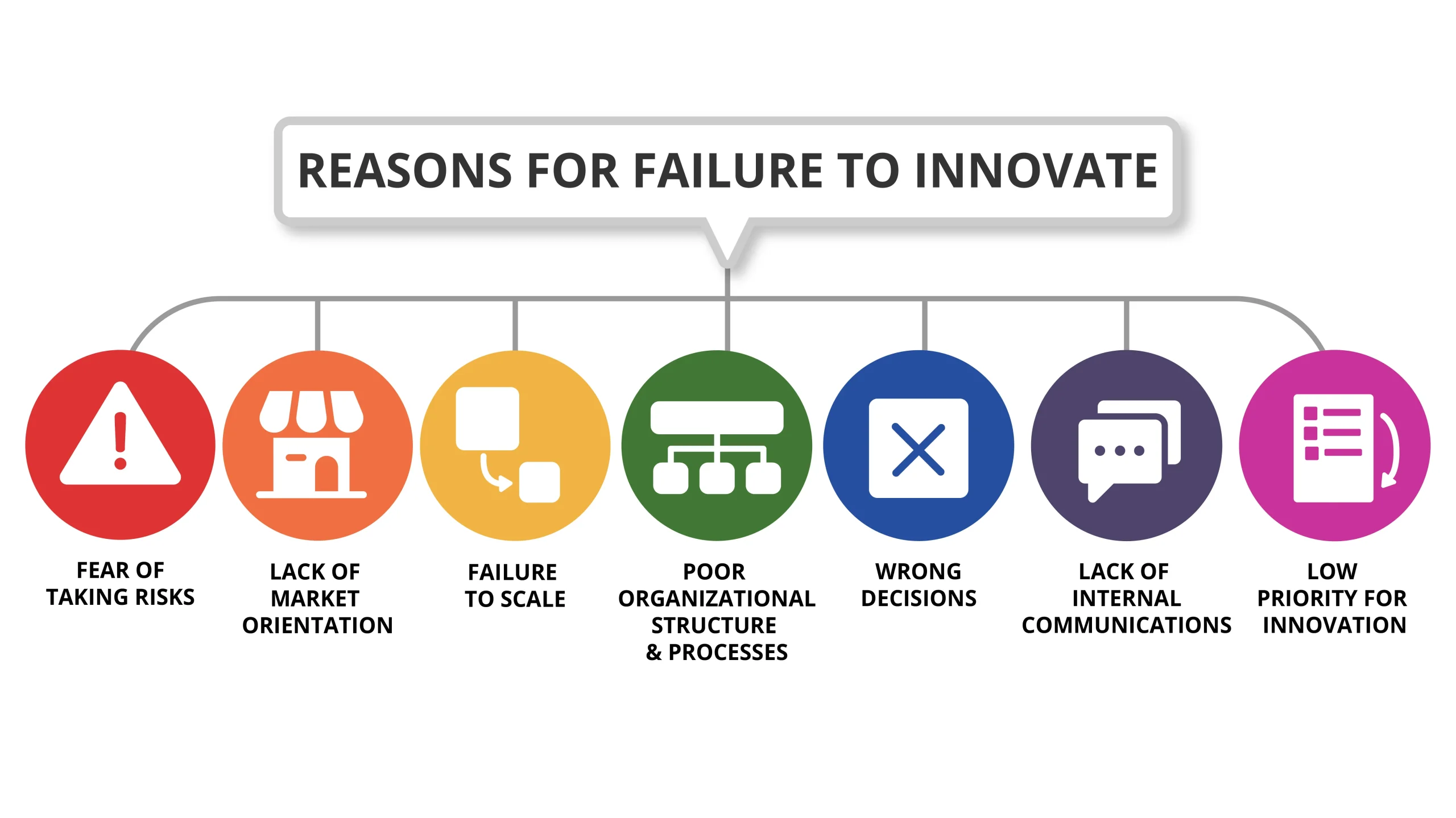
Organizational issues significantly affect customer experience by creating a disjointed service delivery that lacks cohesion. Without a unified front from all departments involved in omnichannel operations, the company cannot present a seamless, integrated experience to its customers, leading to frustration and disengagement.
Impact on Customer Experience
Each category of omnichannel failure — strategic, technological, executional, and organizational — has a profound impact on customer experience, with each type of failure contributing uniquely to potential customer dissatisfaction and disengagement.
Strategic failures occur when there’s a misalignment between the company’s omnichannel strategies and the actual needs or behaviors of their customers. This misalignment often results in confusion, a loss of trust, and decreased customer engagement. For example, when businesses implement inconsistent pricing or promotions across different channels, or when product availability varies widely between the online store and physical outlets, customers can feel misled or undervalued. The result is often a reduction in brand loyalty and an increase in customer churn, as shoppers move to competitors with more consistent and customer-focused strategies.
Technological failures affect the tools and platforms that facilitate omnichannel interactions, impacting everything from website functionality to inventory management systems. Common issues include slow website performance, mobile apps that crash, and checkout processes that are fraught with glitches. Such technological shortcomings can frustrate customers, leading them to abandon purchases midway. Additionally, if customer relationship management (CRM) systems fail to integrate data across touchpoints effectively, customers won’t receive the personalized experiences they have come to expect. This not only diminishes the quality of customer service provided but also prevents the business from leveraging deep insights into customer preferences that could drive sales and improve satisfaction.
Executional failures are characterized by the poor implementation of omnichannel strategies. Even with a robust strategic and technological framework, executional missteps—such as inadequate staff training or poorly managed logistics—can lead to severe customer service breakdowns. For instance, if promotional campaigns are not executed uniformly across all channels, or if staff are unaware of certain promotions available online, customers can receive mixed messages, leading to frustration and a perception of incompetence. Additionally, logistical errors in fulfilling online orders for in-store pickup can cause significant delays and inconvenience, directly harming the customer’s experience and potentially damaging the retailer’s reputation.

Organizational failures stem from internal structural issues within a company that hinder effective omnichannel management. These can include departmental silos that obstruct seamless communication and coordination, essential for delivering a unified customer experience. When information does not flow freely between departments, customers may receive conflicting information depending on whether they interact with call centers, websites, or in-store personnel. Furthermore, a lack of commitment at the leadership level to foster a collaborative culture can exacerbate these issues, leading to inefficient processes and a workforce that is not aligned with the company’s omnichannel ambitions.
Each type of failure not only impacts the direct interaction between the customer and the company but also has longer-term repercussions for customer loyalty and brand perception. Effective management of omnichannel strategies must therefore include a comprehensive approach that addresses potential pitfalls in strategic planning, technology deployment, execution, and organizational culture to ensure a seamless and satisfying customer experience.
Omnichannel Failure Examples: Case Studies
Strategic Failure: Nokia’s Lack of Market Adaptation
In the late 1990s and early 2000s, Nokia emerged as a titan in the mobile phone industry, dominating the market with its innovative designs and robust technology. Known for its durable hardware and user-friendly interfaces, Nokia was not just a market leader; it was a cultural icon that defined mobile communication for an entire generation. At its zenith, Nokia commanded over 40% of the world’s mobile phone market, setting standards for quality and innovation in the industry.
Background
At its peak in the early 2000s, Nokia was the undisputed leader of the mobile phone market, profoundly influencing global communication with innovations like the iconic Nokia 3310 and the Nokia 9000 Communicator, among others.
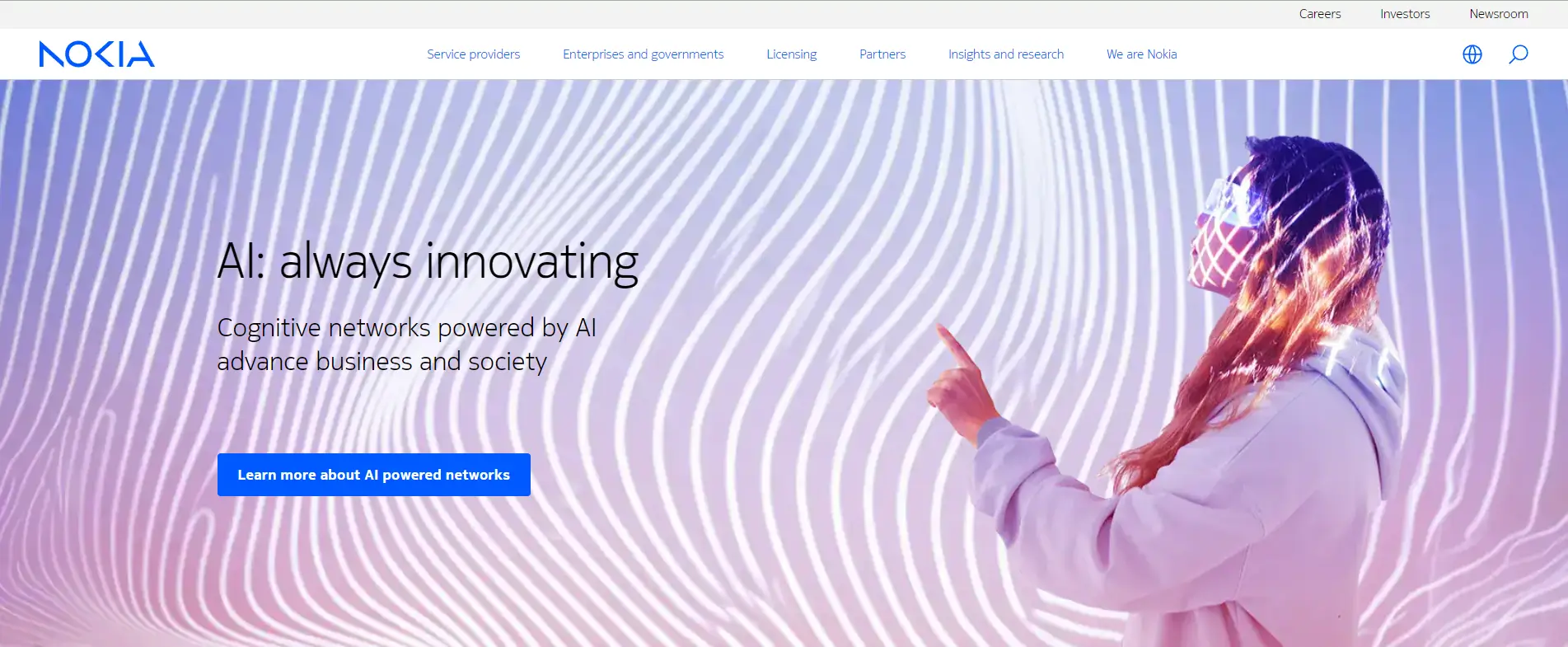
The landscape of the mobile industry began to change dramatically with the introduction of smartphones, especially following Apple’s release of the iPhone in 2007. The iPhone introduced a fully touch-enabled interface, a rich operating system capable of running complex applications, and an integrated ecosystem of services. This marked a pivotal shift in consumer expectations; users began to demand more functionality beyond calling and texting—they expected their phones to act as convergence devices for entertainment, productivity, and social networking.
In response to Apple’s innovations, other manufacturers like Samsung began to aggressively innovate as well, adopting and promoting the Android operating system, which offered similar functionalities to Apple’s iOS but with greater openness and customization options. Samsung’s quick adoption of touch interfaces and its investments in developing a diverse range of mobile devices appealed to a broad spectrum of consumers, allowing it to capture significant market share rapidly.
Despite these seismic shifts in the industry, Nokia was slow to adapt. The company continued to invest in its Symbian platform, which was becoming increasingly outdated compared to the capabilities offered by iOS and Android. Nokia’s reluctance to embrace a more modern operating system and its delayed response to the smartphone revolution exemplify its strategic misalignment with the evolving market trends. Additionally, Nokia’s efforts to integrate its product offerings across online and offline channels were insufficient compared to its competitors, who were rapidly building seamless omnichannel experiences for their customers. This included synergizing online sales platforms with physical retail experiences and providing consistent, up-to-date information and services across these channels.
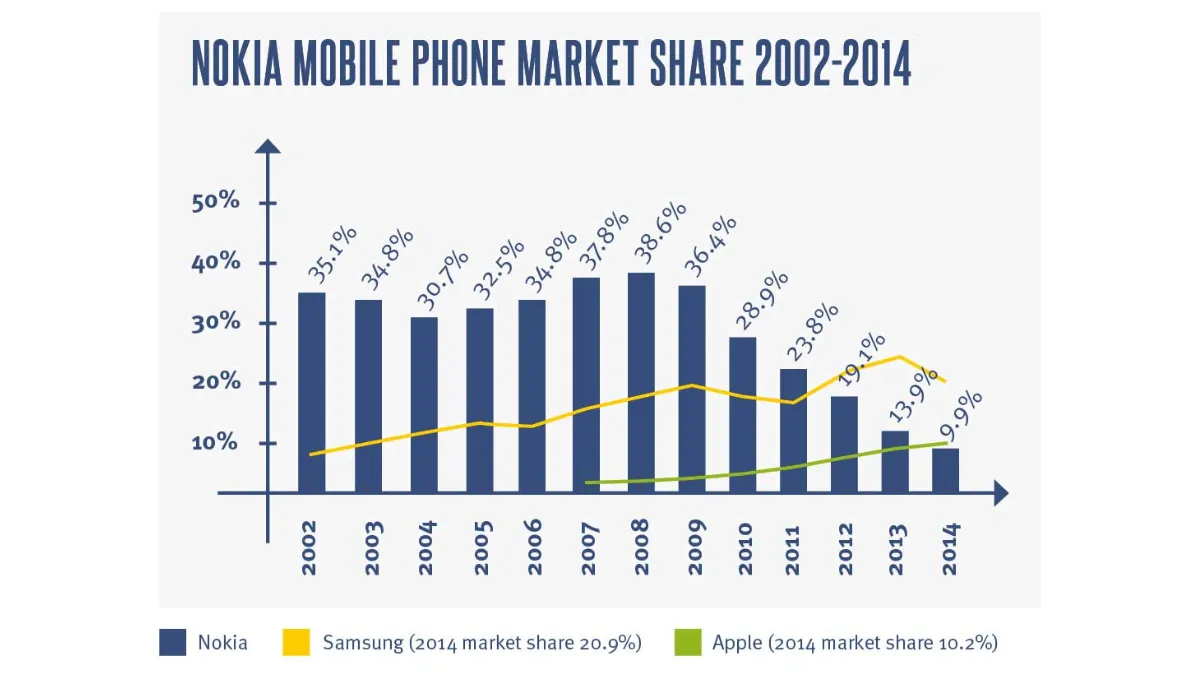
This background sets the stage for a deeper exploration of Nokia’s specific strategic failures, shedding light on how its initial dominance in the mobile phone market was eroded by its inability to keep pace with technological innovations and shifting consumer behaviors in an increasingly connected world.
Analysis of Nokia’s Strategic Failures
Nokia’s decline from its position as a dominant force in the mobile phone industry offers a compelling case study of strategic misalignment in the face of rapidly evolving market dynamics. Below, we explore three critical areas where Nokia’s strategy failed to adapt to the changing landscape, significantly impacting its market position and leading to notable examples of omnichannel failures.
Failure to Embrace Smartphone and Touchscreen Technology
At the turn of the millennium, Nokia was at the forefront of mobile innovation. However, the introduction of Apple’s iPhone in 2007 marked a significant shift in consumer expectations and technology standards. The iPhone’s touchscreen interface and user-friendly design set a new benchmark for what consumers expected from their mobile devices. Despite these clear signals from the market, Nokia hesitated. The company’s initial resistance to fully adopt smartphone technology, particularly its slow adoption of capacitive touchscreen technology, which allows for multi-touch gestures, placed it at a significant disadvantage.
Nokia’s reluctance was rooted in its commitment to its existing product lines and its underestimate of the smartphone’s market potential. This hesitation allowed competitors like Apple and Samsung to capture the imagination and loyalty of consumers, who were rapidly shifting towards devices that offered extensive multimedia capabilities, internet connectivity, and a vast ecosystem of apps. Nokia’s delay in embracing these technologies demonstrated a critical strategic failure to recognize and respond to the changing preferences of the mobile phone consumer base.
Slow Response to Operating System Evolution
Another significant misstep was Nokia’s commitment to its Symbian OS. Once considered advanced, Symbian quickly became outdated as competitors developed more robust and user-friendly operating systems. Apple’s iOS and Google’s Android offered greater flexibility, better user interfaces, and access to a growing library of applications. These platforms were built from the ground up to cater to the new digital consumer who demanded a seamless, integrated experience across their devices.
Nokia’s failure to pivot away from Symbian in a timely manner — or to develop a new, more competitive operating system — meant that it could not compete effectively in the rapidly evolving smartphone market. The company eventually adopted Windows Phone OS in a strategic partnership with Microsoft, but this decision came too late and failed to gain significant traction among consumers accustomed to the diversity and maturity of Android and iOS ecosystems.
Inadequate Integration of Online and Offline Channels
Nokia’s omnichannel strategy — or lack thereof — further exemplifies its strategic failures. As the digital age advanced, the integration of online and offline channels became critical for engaging consumers effectively. Competitors like Apple excelled by creating seamless omnichannel experiences, where consumers could research products online, try them in-store, and receive consistent customer service across every touchpoint.
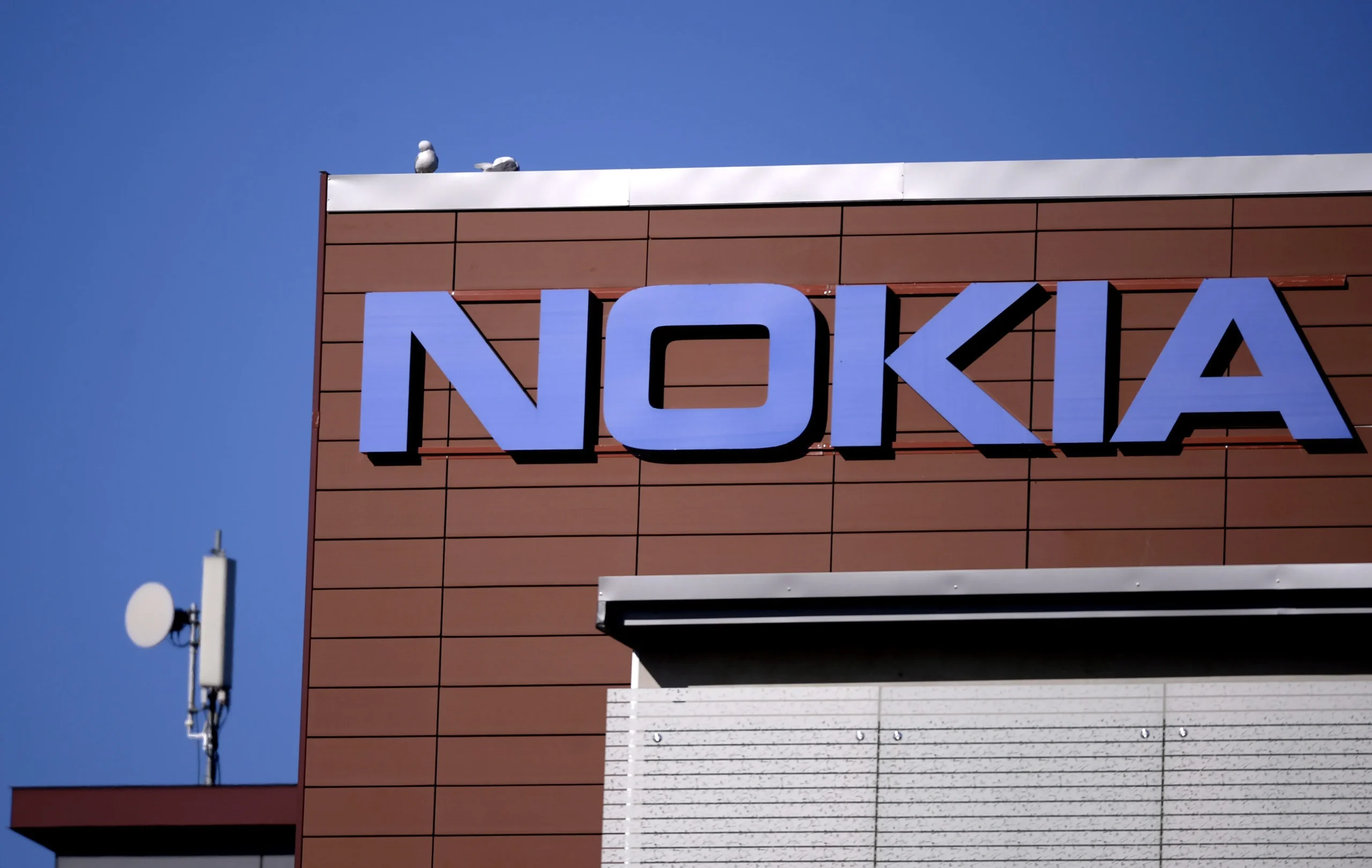
Nokia, however, struggled to integrate these experiences. Its online platforms were not effectively synced with its physical retail presence, leading to disjointed customer experiences. For instance, promotions and products available online were not always aligned with what was offered in stores, and customer service experiences varied widely between channels. This lack of a cohesive omnichannel strategy not only confused customers but also weakened brand loyalty and diminished customer retention.
Impact of Nokia’s Strategic Failures
Nokia’s strategic missteps had profound consequences on its market share and brand loyalty, illustrating a broader lesson on the repercussions of failing to adapt to a fast-evolving market. The reluctance to embrace essential technological advancements not only cost Nokia its leadership position but also resulted in significant financial losses and a tarnished brand reputation.
- Decline in Market Share: As Nokia clung to outdated technologies and strategies, its competitors were rapidly innovating and capturing the attention of the market. Apple’s introduction of the iPhone, followed by the proliferation of Android devices, dramatically shifted consumer expectations and preferences. These competitors offered richer ecosystems, more intuitive interfaces, and a broader range of apps, which were increasingly important to consumers. Nokia’s delayed response to these market shifts meant it was unable to retain its user base, leading to a steep decline in market share. From being the market leader in 2007, Nokia’s smartphone market share plummeted to just 3% by 2013, a stark indicator of the rapid decline due to its strategic oversights.
- Reputational Repercussions: Nokia’s reputation suffered as the brand became associated with being outdated and out of touch with consumer needs. This was exacerbated by the Symbian OS, which became increasingly seen as inferior to the more modern and capable iOS and Android systems. Nokia’s eventual shift to the Windows Phone platform did little to recover its standing, as the platform itself struggled to compete against the established ecosystems of its rivals. The financial implications were severe, with Nokia reporting losses in the billions by the early 2010s, ultimately leading to the sale of its mobile phone business to Microsoft in 2014.
Lessons Learned
The rise and fall of Nokia in the smartphone era offer critical lessons in the importance of agility, proactive strategy, and the necessity of an integrated omnichannel approach.
- Importance of Agility in Technology Adaptation: How to adapt to changing technologies should always be considered when planning a company’s strategy. Nokia’s failure underscores the need for agility in strategic adaptation to new technologies. In the technology sector, where innovation cycles are rapid, the ability to quickly embrace new trends and technologies is crucial. Nokia’s delay in adopting touchscreen technology and a modern operating system cost it dearly. Companies today must be vigilant and flexible, ready to pivot strategies in response to technological advancements and changing consumer behaviors.
- Proactive vs. Reactive Strategy Formulation: Nokia’s approach was largely reactive; it responded to market changes initiated by competitors rather than anticipating or leading such changes. This reactive stance is risky in industries driven by innovation. Proactive strategy formulation involves anticipating future trends and consumer needs, investing in research and development, and setting the pace of change, rather than following it. A proactive approach would have positioned Nokia to better navigate the shifts brought about by the smartphone revolution.
- Integrated Omnichannel Approach: Lastly, Nokia’s struggles highlight the critical role of an integrated omnichannel approach in maintaining competitive advantage. As consumer interactions with brands become increasingly multi-dimensional — spanning physical stores, online platforms, social media, and mobile apps — a cohesive strategy that integrates all these channels is essential. This approach not only enhances the customer experience but also builds stronger brand loyalty and engagement.
Nokia’s story is amongst the textbook omnichannel failure examples of how established companies can falter by failing to adapt to technological innovations and changing consumer behaviors. Each of these strategic failures — whether related to technology adoption, operating system development, or omnichannel integration — contributed to Nokia’s decline. For businesses today, Nokia’s experience serves as a cautionary tale about the necessity of agility, the importance of listening to market signals, and the need to integrate strategies across all consumer touchpoints to maintain competitiveness in a dynamic market environment.
Technological Failures: H&M’s Inventory Mismanagement
H&M, a global leader in the fast-fashion industry, has long been celebrated for its ability to quickly design, produce, and distribute clothing that captures current fashion trends at affordable prices. At its peak, H&M operated thousands of stores across multiple continents, complemented by a robust online presence designed to serve a global customer base. This extensive reach positioned H&M as a powerhouse in retail, capable of influencing fashion trends and consumer behavior worldwide.
Background
H&M, founded in Sweden in 1947, has evolved from a single women’s wear shop in Västerås into one of the most recognized fast-fashion brands in the world. Known for its fast-paced approach to design, H&M has been able to capture and deliver on trends quicker than traditional fashion retailers, offering stylish clothing at accessible prices. The company’s global expansion was meteoric; by the early 2000s, H&M operated stores in dozens of countries around the world and had started to complement its extensive physical retail presence with an expanding online store.

The shift towards integrating online and offline channels marked a significant transformation in the retail industry. This omnichannel approach is designed to provide consumers with a seamless shopping experience, whether they are browsing online from a mobile device, a desktop, or visiting a physical store. For the fashion retail sector, this means synchronizing the shopping experience across various platforms, ensuring that customers can switch between channels effortlessly, and maintaining continuity in customer service, product availability, and consumer engagement.
During this period of transformation, the competitive landscape in retail was rapidly evolving. Retailers were adopting advanced technologies to better manage inventories, streamline operations, and enhance customer experiences. Companies like Zara and Uniqlo leveraged sophisticated supply chain technologies and data analytics to forecast demand, optimize inventory levels, and speed up the manufacturing process. These capabilities allowed them to reduce overhead costs and increase the efficiency of introducing new designs to the market.
Against this backdrop of technological advancement and industry shift towards omnichannel retailing, H&M faced the challenge of updating its own systems. While the brand was a powerhouse in terms of sales and global reach, it began to encounter significant hurdles due to its continued reliance on outdated inventory management systems. This reliance was increasingly at odds with the dynamic nature of the fashion industry and consumer expectations fueled by digital transformation. The next sections will explore how these technological shortcomings impacted H&M’s ability to compete and meet customer expectations in a market that was becoming ever more connected and technologically enabled.
Analysis of H&M’s Technological Failures
H&M’s journey into omnichannel retailing faced significant setbacks primarily due to technological inadequacies in its inventory management systems. These issues can be broken down into three main categories: outdated inventory management systems, poor integration with online platforms, and inefficiencies in supply chain visibility. Each of these areas contributed to operational challenges that not only hindered H&M’s responsiveness to market changes but also impacted customer satisfaction and brand loyalty.
Outdated Inventory Management Systems
At the core of H&M’s challenges was its reliance on outdated inventory management systems that were ill-equipped to handle the complexities of a modern omnichannel retail environment. These systems were traditionally designed for a more linear supply chain model, primarily focused on stocking and restocking physical stores rather than integrating these processes with online sales channels.

The lack of real-time inventory tracking was a critical flaw. Without this capability, H&M struggled to accurately manage stock levels across its numerous global locations and online platforms simultaneously. This led to scenarios where popular items were unavailable despite being shown as in-stock online, or conversely, excess stock accumulated in stores due to inaccurate demand forecasts. The inability to track inventory in real-time meant that H&M could not dynamically adjust its stock distribution in response to shifting consumer demands, a crucial capability in the fast-paced fashion industry.
Poor Integration with Online Platforms
The integration between H&M’s physical inventory systems and its online eCommerce platforms was also notably deficient. This disconnect between different sales channels resulted in a fractured customer experience. For instance, customers frequently encountered discrepancies between the online availability of items and their actual availability in physical stores. This often led to frustration and dissatisfaction, driving customers to more agile competitors.
The issues extended to operational inefficiencies such as overstocking and frequent stockouts. For example, without a unified view of inventory, certain products would appear as available online and lead to an influx of orders that could not be fulfilled, or conversely, excessive quantities of certain styles would remain unsold in physical locations but were not made available online quickly enough to meet demand. These inefficiencies not only led to lost sales but also increased operational costs related to holding and eventually clearing unsold inventory.
Inefficiencies in Supply Chain Visibility
Lastly, H&M’s supply chain suffered from poor visibility, which significantly impacted its ability to adapt to fast-changing fashion trends—a key component of success in the fast-fashion industry. The lack of detailed visibility into the supply chain meant H&M was slower to react to new trends emerging on the fashion scene compared to its competitors.

The delayed response to shifts in consumer demand was particularly damaging. In an industry where trends can come and go in a matter of weeks, the ability to quickly pivot production and distribution strategies is paramount. H&M’s sluggish response times, due to inadequate inventory insights, meant missing out on peak demand periods, resulting in missed opportunities and compromised sales performance.
Impact of H&M’s Technological Failures
H&M’s technological shortcomings in inventory management had profound operational and financial impacts on the company. These failures manifested as significant disruptions that reverberated across its entire sales network, from online platforms to physical stores around the globe.
- Operational Disruptions: The operational disruptions resulting from H&M’s outdated inventory management systems were multifold. Primarily, these systems failed to provide a clear and accurate view of stock levels across different channels, leading to misallocated resources and inefficiencies. For instance, in some cases, popular items would show as available online, prompting customer orders that could not be fulfilled due to actual stock shortages. Conversely, physical stores often held excess inventory of items that were not selling, taking up valuable space and tying up capital that could have been better used elsewhere. These inventory mismatches necessitated significant logistical adjustments, including transferring stock between stores or from warehouses to stores, which not only increased operational costs but also delayed response times to market demands. The inability to synchronize inventory effectively across all channels also meant H&M was slower in clearing out-of-season stock, further exacerbating operational inefficiencies.
- Financial Repercussions: The financial repercussions of these technological failures were significant. One of the most immediate impacts was lost sales due to stockouts of popular items, which directly affected revenue. Additionally, the inability to accurately match supply with demand led to increased markdowns as H&M was forced to clear unsold inventory at discounted prices, negatively impacting profit margins. In 2019, H&M had to write down 4 billion dollars in unsold inventory. Moreover, the operational inefficiencies incurred additional costs that eroded profitability. These included increased logistics costs associated with transferring stock between locations to address inventory imbalances and higher warehousing costs due to unsold goods. These financial strains highlighted the critical need for a more robust and responsive inventory management system capable of adapting to the fast-paced nature of the fashion retail sector.
Lessons Learned
The challenges H&M faced serve as vital lessons for the retail industry, particularly in how essential modern, integrated inventory management systems are for maintaining competitiveness in a market driven by rapid changes in consumer preferences.
- Importance of Modern, Integrated Inventory Management Systems: The experience of H&M underscores the importance of implementing modern inventory management systems that are fully integrated across all retail channels. Such systems provide real-time visibility into stock levels, enabling retailers to make informed decisions about stock reordering, distribution, and markdown strategies. They also facilitate a more dynamic alignment of supply with fluctuating demand, minimizing the risk of stockouts and overstocks.
- Need for Real-Time Data Analytics: Real-time data analytics is another crucial component in effective inventory management. These systems allow retailers to track consumer buying patterns and preferences in real-time, enabling them to anticipate changes in demand and adjust their inventory accordingly. For H&M, adopting advanced data analytics could help better predict which styles are likely to be in high demand, thus optimizing their production and procurement strategies.
- Enhancing Supply Chain Agility and Responsiveness: Finally, H&M’s difficulties highlight the essential role of technology in enhancing supply chain agility and responsiveness. In today’s fast-fashion environment, the ability to quickly adapt to new trends and consumer demands is paramount. This requires a supply chain that is not only efficient but also highly responsive, capable of accelerating production and distribution processes as needed. Technology plays a pivotal role in achieving this by integrating operations and enabling faster communication across the supply chain.
H&M’s experience serves as one of the omnichannel failure examples that underscores the critical importance of robust, integrated technological solutions in today’s omnichannel retail landscape. The company’s struggles with outdated systems, poor online integration, and lack of supply chain visibility exemplify the challenges retailers face when technology does not keep pace with the demands of a dynamic market environment. For retailers looking to excel in omnichannel retailing, investing in advanced inventory management systems and ensuring seamless integration across all channels are not just advantages — they are necessities to stay relevant and competitive in the fast-evolving fashion industry.
Executional Failures: Walmart’s Early Online Struggles
Walmart has long been a cornerstone of the global retail landscape, renowned for its extensive network of supercenters, discount stores, and grocery outlets. As the world’s largest retailer, it has played a pivotal role in defining the retail experience for millions of consumers worldwide. Traditionally, Walmart’s strength lay in its massive physical presence and ability to leverage economies of scale to offer low prices. However, the rapid evolution of digital commerce presented new challenges and opportunities that required an innovative approach beyond the brick-and-mortar model.
Background
Founded in 1962 by Sam Walton in Rogers, Arkansas, Walmart quickly grew from a single discount store into the largest retail chain in the world, renowned for its ability to deliver low prices through economies of scale, a vast distribution network, and a strong focus on cost control. For decades, Walmart’s business model was anchored in physical retail, with sprawling stores across the United States and eventually internationally. This model was highly effective in driving down costs and maintaining a price leadership strategy that other retailers struggled to match.
However, as the internet began to transform the commercial landscape in the late 1990s and early 2000s, eCommerce emerged as a new frontier in retail. The shift toward online shopping was propelled by the increasing accessibility of the internet and consumer demand for more convenient shopping options. This shift marked a significant evolution in the retail industry, where digital presence became just as important as physical presence.
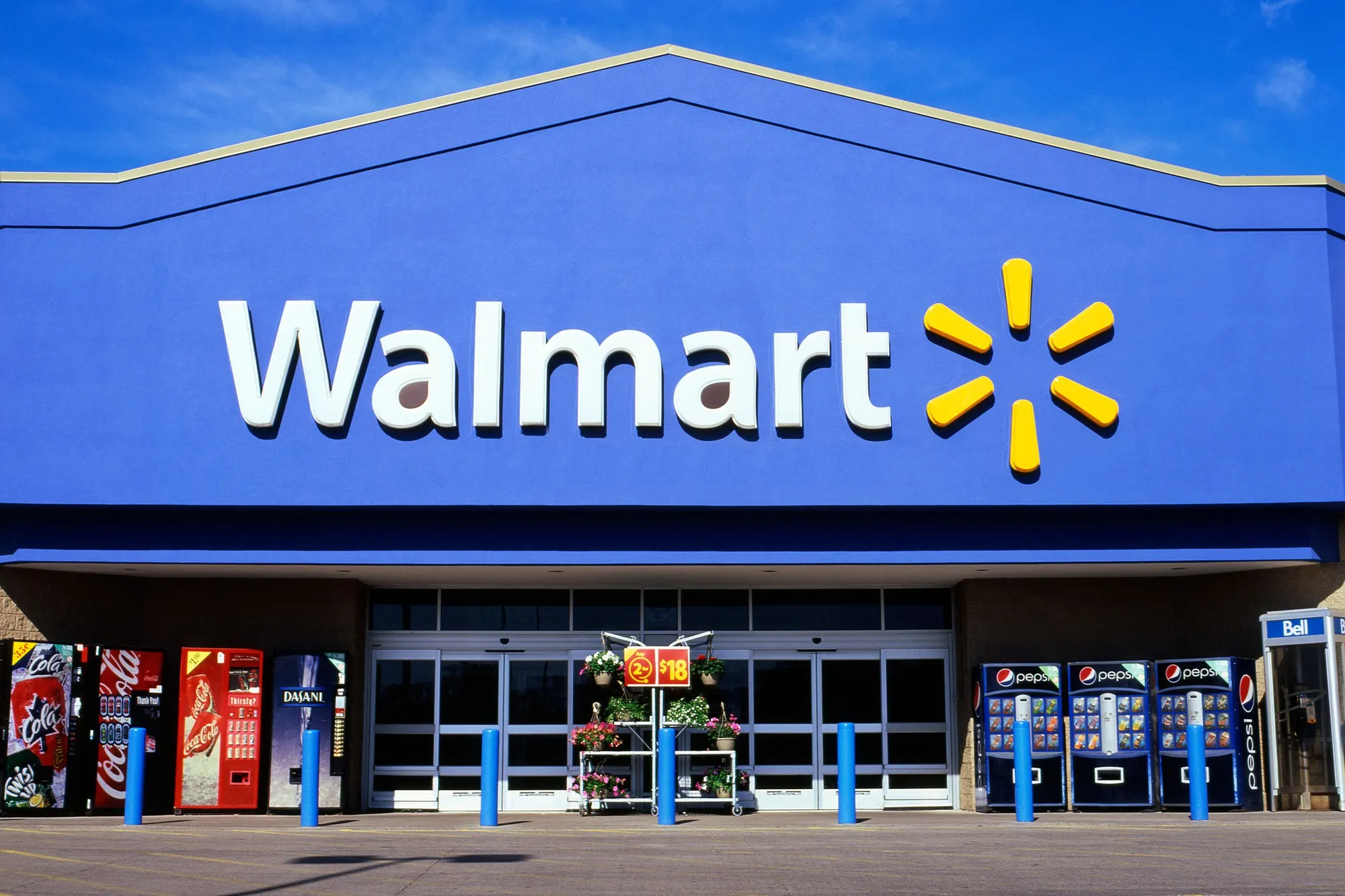
During this time, the competitive landscape began to change dramatically with the rise of dedicated online retailers, most notably Amazon. Founded in 1994, Amazon started as an online bookstore but quickly expanded its offerings, aiming to become a universal retailer. Unlike Walmart, Amazon did not have a network of physical stores to manage, which allowed it to focus entirely on building an efficient, consumer-friendly online shopping experience. This focus helped Amazon to establish a strong online presence early on, characterized by an expansive product range, personalized shopping recommendations, and a highly optimized supply chain that catered to rapid delivery expectations.
Walmart, in contrast, faced significant challenges as it sought to transition into online retail. The company’s traditional strengths in physical retail — such as store management, merchandise assortment, and price optimization — did not seamlessly translate into the digital realm. Walmart’s initial online ventures revealed a lack of experience in managing eCommerce logistics, difficulty in integrating online and offline inventory systems, and an underdeveloped digital customer engagement strategy. These challenges were compounded by the fact that Walmart’s entry into online retail was reactive rather than proactive, largely in response to the growing threat posed by Amazon and other eCommerce platforms that were capitalizing on the digital wave.
The backdrop of Walmart’s struggle to adapt to eCommerce highlights a critical period in retail history, where traditional retail giants had to rethink their strategies and operations to maintain relevance in an increasingly digital marketplace. This case study will further explore the specific executional failures that Walmart encountered during its early attempts to establish an online presence, examining the lessons learned and how the company eventually sought to leverage its enormous scale and resources to catch up in the digital race.
Analysis of Walmart’s Executional Failures
Despite heading in the correct direction strategically, Walmart’s early online endeavors were marked by several significant executional failures. These failures highlight the challenges faced by a traditional retail giant in adapting to the fast-evolving digital marketplace. Below, we explore three critical areas where Walmart struggled: the development of its online platform, integration of online and offline systems, and online marketing and customer engagement strategies.
Inadequate Online Platform Development
When Walmart initially launched its online store, the platform was not up to the standards consumers had come to expect from more mature eCommerce sites like Amazon. The user interface was clunky and not user-friendly, which deterred seamless browsing and shopping. This was a critical misstep, as ease of use is a fundamental requirement for successful online retail.
Walmart’s website also suffered from frequent technical issues, including slow loading times and transaction errors, which further frustrated customers. Such problems stemmed from an underlying issue: Walmart’s digital infrastructure was not originally built to handle high volumes of online traffic or complex eCommerce transactions. This inadequate foundation meant that Walmart was playing catch-up from the start, trying to retrofit old systems rather than designing digital-first solutions that could scale with growing online demand.
Poor Integration of Online and Offline Systems
One of the most significant challenges Walmart faced was integrating its massive physical infrastructure with its nascent online operations. This integration is crucial for an omnichannel approach, as it ensures consistency and reliability across different shopping platforms. However, Walmart encountered difficulties in synchronizing its inventory systems, leading to discrepancies in stock levels shown online versus what was actually available in stores.
These integration issues also affected order fulfillment. Customers experienced delays and errors with online orders being picked up in-store or shipped from local stores. This was largely due to Walmart’s distribution centers and store-based inventory systems operating on separate tracks, without the real-time communication needed to fulfill orders efficiently. The failure to integrate these systems not only compromised the customer experience but also reflected a broader issue of siloed operations within the company, hindering its ability to operate fluidly across various channels.
Ineffective Online Marketing and Customer Engagement
Walmart’s early attempts at online marketing and customer engagement also fell short. The retail giant struggled to understand and leverage the digital marketing tools and tactics that are effective in driving eCommerce sales. Walmart’s marketing strategies were initially extensions of their in-store promotions, which did not resonate well with online audiences looking for personalized and engaging digital content.
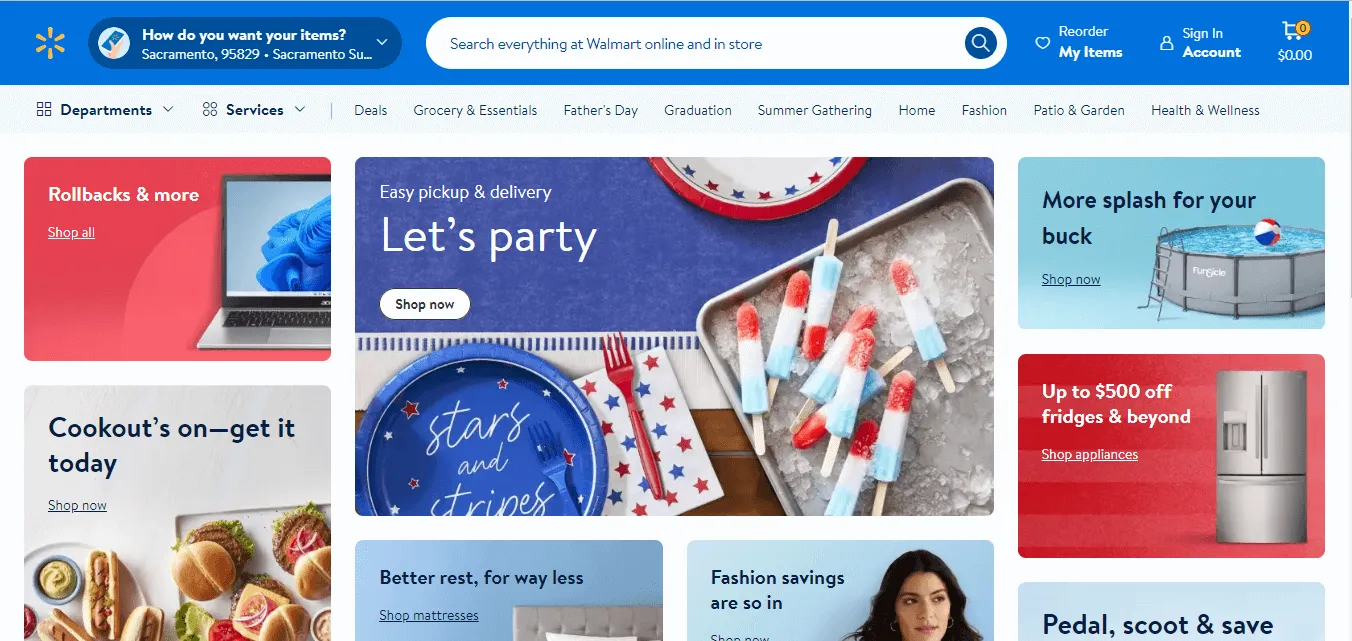
Furthermore, Walmart was slow to adopt advanced analytics and customer data platforms that could enhance personalization and target marketing efforts more effectively. This lag in adopting digital marketing innovations meant Walmart missed opportunities to connect with and retain online customers. The company’s approach was often reactive, scrambling to implement features and promotions that competitors had already successfully executed, rather than anticipating customer needs and setting market trends.
Impact of Walmart’s Executional Failures
Walmart’s early executional missteps in online retail had profound and lasting effects on its business performance and strategic positioning in the market. These issues were particularly impactful in two primary areas: loss of sales opportunities and the erosion of customer satisfaction, both of which had broader implications for Walmart’s brand reputation and competitive position.
- Lost Sales Opportunities: The technical inadequacies of Walmart’s online platform and the disjointed integration of online and offline systems resulted in numerous lost sales opportunities. Customers faced with a cumbersome online shopping experience, characterized by slow website performance, navigation difficulties, and checkout issues, often abandoned their shopping carts. Additionally, the inaccurate reflection of inventory levels led to scenarios where customers could not purchase items that were erroneously listed as available or were dissuaded by the inability to access a broad range of products seamlessly across both physical and online stores. These lost opportunities were not just immediate sales losses but also missed chances to build loyalty among a growing cohort of online shoppers. As competitors like Amazon continued to enhance their online offerings and shopping experiences, Walmart risked falling further behind, not just in terms of sales figures but also in its ability to attract and retain a digitally-savvy customer base.
- Erosion of Customer Satisfaction: The initial failures in Walmart’s online execution significantly impacted customer satisfaction. Inconsistent customer experiences across different shopping channels, from online browsing to in-store pickups, fostered a sense of unreliability and frustration among consumers. This was particularly detrimental for a brand like Walmart, which had traditionally prided itself on customer convenience and value. When expectations set by the online experience were not met in the physical realm — or vice versa — customers felt a disconnect that could lead to a deterioration of trust in the Walmart brand. These executional failures also affected Walmart’s brand reputation in the competitive landscape. As Walmart struggled to provide a cohesive omnichannel experience, competitors who were more adept at integrating their retail channels capitalized on these missteps, positioning themselves as more customer-centric and technologically advanced. This shift not only influenced customer preferences but also reshaped market dynamics, with Walmart perceived as lagging behind in the eCommerce evolution.
Lessons Learned
From these challenges, Walmart and other retailers can extract critical lessons about the importance of how to correctly execute omnichannel strategies and the need to continuously innovate and adapt in response to changing consumer expectations and technological advancements.
- Importance of Seamless Integration: The importance of seamlessly integrating online and offline channels has emerged as a critical lesson from Walmart’s early digital trials. Effective integration helps ensure that inventory data is accurate across all platforms, order fulfillment is efficient, and the customer experience is consistent, regardless of how or where a customer chooses to shop. This integration is crucial not only for operational efficiency but also for building customer trust and loyalty in a brand’s ability to deliver a smooth shopping experience.
- Need for Continual Development of Online Platforms: Walmart’s journey underscores the need for continual development and refinement of online platforms. Walmart’s strategy was heading in the right direction in moving towards an online platform, however, the failure lies in execution as Walmart’s online platform cannot keep up with demands. As digital technologies and consumer behaviors evolve, so too must online retail platforms. This means regularly updating the user interface, streamlining the checkout process, ensuring website speed, and utilizing data analytics to personalize the shopping experience. Investing in these areas helps keep a retailer competitive and relevant in the digital age.
- Significance of Effective Online Marketing and Engagement: Lastly, effectively executing online marketing and customer engagement are essential for cultivating a successful eCommerce presence. Walmart learned that engaging with customers online involves more than just transitioning in-store promotions to the digital realm. It requires a deep understanding of digital marketing techniques, such as SEO, content marketing, social media engagement, and targeted advertising. These strategies must be continually optimized to align with evolving platforms and consumer preferences, ensuring that marketing efforts resonate with and effectively reach the intended audience.
Walmart’s early struggles with online retail highlight the critical importance of agile and forward-thinking execution in omnichannel strategies. These executional failures underline the necessity for robust digital infrastructure, seamless integration of online and offline operations, and proactive online marketing strategies. For traditional retailers, Walmart serves as one of the omnichannel failure examples that transitioning to digital needs not only correct strategy but also competent execution that requires fundamental rethinking of operations, customer engagement, and organizational dynamics. By addressing these challenges, Walmart has made significant strides over the years, evolving its strategies to better meet the needs of today’s digital consumers and reaffirming its position as a retail leader.
Organizational Failures: GAP’s Misaligned Organizational Change
GAP Inc., a mainstay in global apparel retail, has long been celebrated for its iconic brands and substantial influence in shaping casual American fashion. Established in 1969, GAP grew rapidly through its commitment to providing stylish, reliable clothing at accessible prices. As the company expanded, it established a strong physical presence with stores across the world, becoming synonymous with basic yet fashionable apparel suitable for a wide demographic.
Background
GAP, founded in 1969, quickly became a pillar of American retail, known for its trendy yet accessible apparel that catered to a broad demographic. Over the decades, GAP established a strong market presence with a vast network of stores worldwide, successfully embedding itself as a staple in casual American fashion. However, as the retail landscape began to evolve, GAP faced the necessity to adapt to new market realities.
One of GAP’s most publicized struggles in recent years was its attempt to revamp its brand image, which included the introduction of a new logo in 2010. This change was met with immediate backlash from customers and the public, who felt a strong attachment to the original logo that had long been a symbol of the brand’s identity. It shows the lack of a cohesive and correct organizational ideology. The negative reaction was swift and significant, forcing GAP to revert to its old logo within just one week. This incident underscored the challenges GAP faced in trying to modernize its brand while maintaining its established identity and customer base.
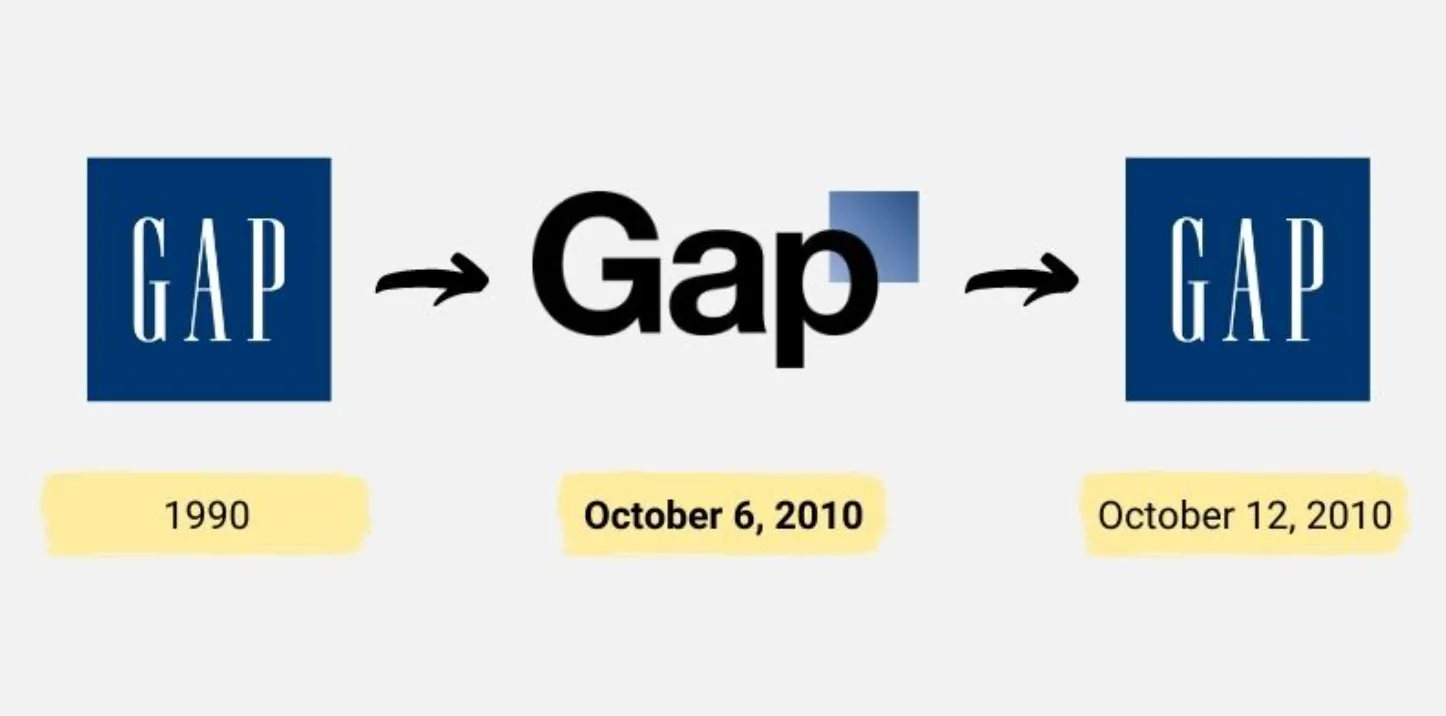
Amidst these branding challenges, the retail sector was undergoing a significant transformation driven by the rise of digital commerce. The shift toward omnichannel strategies became critical as consumer preferences moved increasingly towards shopping experiences that seamlessly integrate online and offline channels. For GAP, this meant developing capabilities to allow customers to interact with the brand fluidly across multiple platforms, from brick-and-mortar stores to online shopping and mobile interactions.
The competitive landscape during this period was fiercely dynamic, with competitors like Zara and H&M excelling at fast fashion cycles powered by sophisticated supply chains and strong omnichannel strategies. These competitors not only brought new designs to the market at a rapid pace but also offered cohesive customer experiences across various digital and physical touchpoints. As these brands gained market share, GAP was compelled to reassess and strengthen its omnichannel approach, aiming to enhance customer engagement and operational efficiency across all its channels.
In this context, GAP’s attempt to align its organization and operations with an effective omnichannel strategy was fraught with internal and external challenges. The case study will explore these obstacles in detail, focusing on the organizational dynamics within GAP that impacted its ability to execute a successful omnichannel transformation.
Analysis of GAP’s Organizational Failures
GAP’s attempt to integrate a robust omnichannel strategy was significantly hindered by organizational challenges that impacted its ability to provide a cohesive customer experience. These challenges can be categorized into three main areas: misalignment of messaging and branding across channels, lack of integrated communication strategies, and internal conflicts within departmental silos.
Misalignment of Messaging and Branding Across Channels
GAP’s efforts to revamp its image, highlighted by the failed introduction of a new logo in 2010, exemplify the difficulties in maintaining consistent messaging and branding across different channels. This initiative intended to modernize the brand’s image backfired due to a disconnect between GAP’s understanding of its identity and the perceptions held by its loyal customer base. The swift and overwhelmingly negative reaction from the public led to an equally rapid retraction of the new logo, reinforcing the importance of cohesive branding efforts.
This misalignment was not limited to the logo debacle but extended to GAP’s overall marketing strategies, which often varied significantly between online and offline platforms. Promotions, product placements, and even fashion lines sometimes differed from one channel to another, confusing customers and diluting the brand’s identity. The lack of a unified communication strategy meant that instead of a seamless shopping experience, customers encountered a patchwork of interactions that felt disjointed and inconsistent, ultimately impacting customer loyalty and trust.
Lack of Integrated Communication Strategies
A key component of successful omnichannel strategies is the integration of communication across all platforms. However, GAP struggled with developing and implementing an integrated communication strategy. This failure resulted in operational inefficiencies and a customer experience that varied widely depending on the channel.
For instance, online marketing campaigns were not always reflected in stores, and vice versa, leading to missed opportunities for cross-promotion and synergy. Customer service protocols also varied, with online customer service teams often unable to address issues arising in physical stores. This lack of coordination between online and offline teams resulted in a fragmented approach to customer engagement and service, undermining efforts to build a unified brand experience.
Internal Conflicts and Departmental Silos
GAP’s organizational structure contributed significantly to its omnichannel struggles. The company’s departments operated in silos, with little collaboration between the teams managing different sales channels. This siloed structure led to internal conflicts, particularly as different departments competed for resources or had conflicting priorities.

The resistance to change within these silos was exacerbated by a lack of clear directives and support from leadership, which failed to communicate a coherent vision for the omnichannel strategy. Without strong leadership advocating for and guiding the integration process, initiatives often lacked the momentum and coordination needed to be effective. This resulted in inefficiencies and a slow response to market changes, leaving GAP lagging behind more agile competitors.
Impact of GAP’s Organizational Failures
The organizational challenges GAP faced in its efforts to implement an effective omnichannel strategy had profound effects on its operational effectiveness, market position, and customer relations. These impacts can be delineated into several critical areas:
- The decline in Operational Effectiveness: GAP’s organizational structure, characterized by siloed departments with poor intercommunication, directly impaired its operational agility. The lack of coordination between online and physical store operations often resulted in inventory mismatches — where online platforms would advertise products that were unavailable or in short supply. This not only led to lost sales but also increased operational costs as the company scrambled to manually rectify these mismatches, further straining resources.
- Erosion of Market Share: As GAP struggled with internal alignment and consistent execution of its omnichannel strategy, competitors who were more adept at integrating their online and offline operations began to outpace the company. Brands like Zara and Uniqlo, known for their rapid supply chain and cohesive customer experiences, capitalized on GAP’s weaknesses. As a result, GAP saw a gradual erosion of its market share as customers migrated to competitors that offered more seamless shopping experiences, faster product rotations, and more reliably in-stock items.
- Damage to Customer Loyalty and Brand Perception: The inconsistency in GAP’s branding and customer experience across channels contributed to a decline in customer loyalty. Shoppers encountered a brand that seemed disjointed and often unreliable, whether it was through mismatched promotions, varying product availability, or inconsistent customer service experiences. This fragmented brand experience damaged GAP’s reputation, making it difficult to retain loyal customers and attract new ones in a highly competitive retail environment.
Lesson learned
From GAP’s challenges, several key lessons emerge that are critical for any retailer looking to succeed in omnichannel retail:
- Importance of Cohesive Branding and Consistent Messaging: GAP’s struggle highlights the necessity for retailers to maintain cohesive branding and consistent messaging across all channels. Customers expect a unified brand experience whether they are shopping online, on a mobile app, or in a physical store. Discrepancies in this experience can lead to confusion and disillusionment, potentially driving customers to more consistent competitors.
- Need for Integrated Communication Strategies: One of the critical shortcomings in GAP’s strategy was the lack of integrated communication across departments. Retailers must ensure that all parts of the organization — not just customer-facing roles but also back-end operations like supply chain and inventory management — are in constant communication and aligned in their objectives. This integration helps in streamlining operations, reducing inefficiencies, and presenting a unified front to the customer.
- Role of Leadership in Driving Change: Effective leadership is paramount in navigating the complex waters of omnichannel retail. Leaders must not only provide a clear vision and steadfast guidance but also foster an environment that embraces change, encourages interdepartmental collaboration, and breaks down silos. Without strong leadership, efforts to implement widespread organizational change are likely to flounder, as was evident in GAP’s case.

GAP’s experience serves as one of the omnichannel failure examples to gawk upon for retailers embarking on or struggling with omnichannel transformations. It underscores the need for a holistic approach that considers not just the technological and customer-facing aspects of omnichannel retail but also the foundational organizational changes that support these initiatives. For companies like GAP, the journey towards effective omnichannel integration involves continuous learning, adaptation, and the willingness to reconfigure traditional business models to meet modern demands.
Technological Challenges in Omnichannel Implementations
Common tech-related pitfalls
In the realm of omnichannel strategies, several common technological pitfalls often undermine even the most well-intentioned efforts. Integration issues, data silos, and reliance on outdated systems are frequent obstacles that can significantly impede a company’s ability to provide a seamless customer experience across multiple channels.
- Integration Issues: One of the most significant technological challenges in omnichannel implementations is the integration of various systems and platforms. Retailers often need to synchronize their eCommerce platforms with physical point-of-sale systems, inventory management software, customer relationship management (CRM) systems, and other operational tools. Failure in this area can lead to inconsistent customer experiences. For example, if inventory levels are not updated in real-time across all platforms, it could result in the sale of items that are no longer in stock, leading to customer dissatisfaction and damaging trust. Integration issues are a frequent contributor to omnichannel failure examples, as they directly impact the fluidity and reliability of the customer experience.
- Data Silos: Data silos occur when different departments or segments of a business use separate systems that are not interconnected, resulting in isolated pools of data. This lack of connectivity often means that valuable customer insights are not shared across the organization, hindering the ability to offer personalized customer experiences and make informed business decisions. In an omnichannel context, the inability to access unified, comprehensive data about customer behaviors and preferences across channels can lead to ineffective marketing strategies and poor customer service—classic examples of omnichannel failure due to organizational inefficiencies and technological limitations.
- Outdated Systems: Continuing to rely on outdated technological systems can severely impede a company’s ability to compete in a digital-first marketplace. These systems are often incompatible with newer technologies required for effective omnichannel strategies, such as advanced analytics, artificial intelligence for personalization, and cloud-based services that offer scalability and flexibility. Outdated systems not only slow down operations but also increase the risk of system outages and security breaches, which can erode customer confidence and loyalty, further compounding the omnichannel failure examples witnessed across various industries.
Each of these issues not only affects the operational efficiency but also directly impacts the customer’s interaction with the brand, leading to dissatisfaction and potentially driving them towards competitors. Addressing these pitfalls is crucial for businesses aiming to capitalize on the benefits of a truly integrated omnichannel approach.
Importance of robust IT infrastructure
A robust IT infrastructure is absolutely critical as the backbone of any successful omnichannel strategy, ensuring that all channels, from online and mobile to in-store, operate seamlessly and cohesively. When IT infrastructure is lacking in robustness or modern capabilities, the ramifications for omnichannel strategies are profound and multifaceted, leading directly to some of the most illustrative omnichannel failure examples.
Firstly, a robust IT infrastructure ensures the smooth operation of all systems and their integration. This means that information flows seamlessly between the eCommerce site, mobile apps, and brick-and-mortar point-of-sale systems. It also facilitates the real-time updating of crucial operational data such as inventory levels, pricing adjustments, and customer preferences across all channels. When these systems are not fully integrated or lack the capacity for real-time data exchange, inconsistencies arise. Customers may encounter situations where items available online are out of stock when they try to purchase them in-store, or promotions offered on one channel are not recognized in another, leading to customer frustration and diminished trust in the brand.
Furthermore, a strong IT infrastructure supports high levels of system availability, which is essential for maintaining continuous operations across all channels. This includes having robust server capabilities and reliable backup systems that can handle heavy traffic loads, especially during peak shopping periods, without crashing or slowing down. Inadequate infrastructure in this regard can result in system downtimes and slow loading times, which not only hurt the immediate sales but also long-term customer relationships as shoppers turn to more reliable competitors.
The ability of an IT infrastructure to scale rapidly is another critical component. As businesses grow and customer demands evolve, the infrastructure must be able to scale accordingly to handle increased loads and the introduction of new services or expansions into new markets. This scalability ensures that the business can continue to meet customer expectations without any loss in service quality or operational speed. Failure to scale effectively can manifest as sluggish performance during critical times, inability to expand the product offerings efficiently, or even complete service outages.
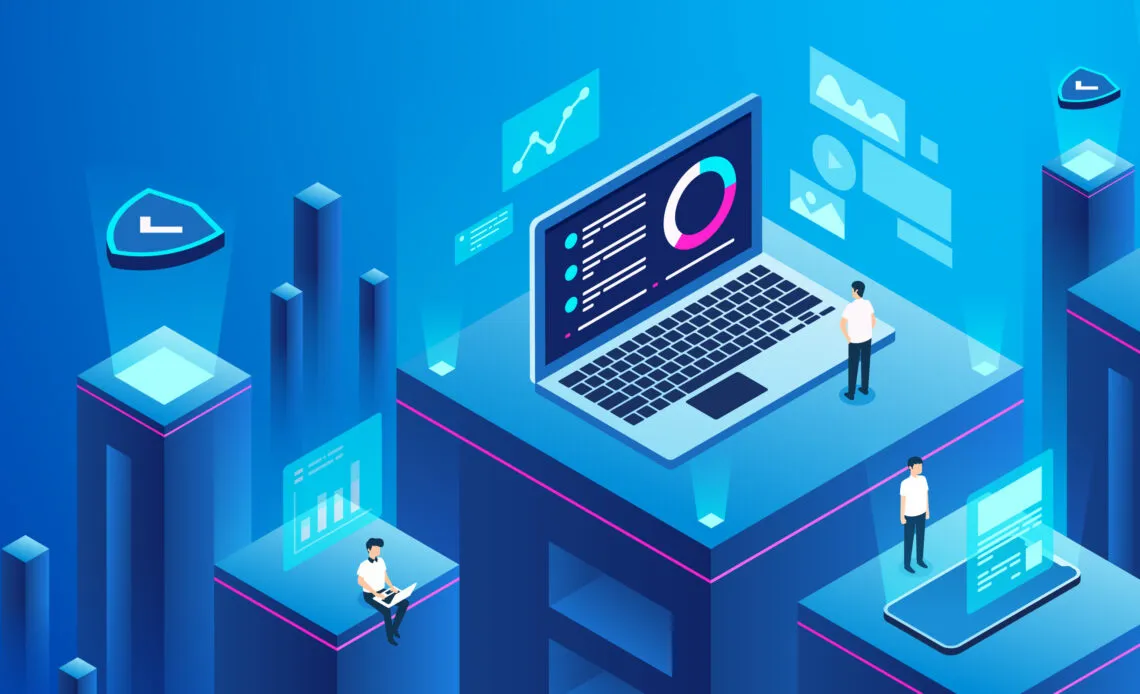
Without a solid foundation in IT infrastructure, businesses might struggle to manage the volume and velocity of transactions across channels effectively. This is a classic example of how technological inadequacies lead to omnichannel failures. The lack of a robust infrastructure impacts not just the operational efficiency but also overall customer experience, as modern consumers expect fast, reliable, and consistent interactions with brands across all platforms. In this digital age, where the competition is only a click away, ensuring that the technological backbone of your omnichannel strategy is strong is not just advisable — it’s imperative.
Strategic Missteps in Omnichannel Planning
Lack of Customer-Centric Strategies
One of the most glaring omnichannel failure examples stems from a lack of customer-centric strategies. This issue arises when businesses focus too heavily on integrating technologies and touchpoints without considering how these integrations serve the customer’s needs and enhance their experience. A customer-centric approach starts with a deep understanding of the customer’s journey and recognizes the various touchpoints and interactions customers have with the brand across both digital and physical channels.
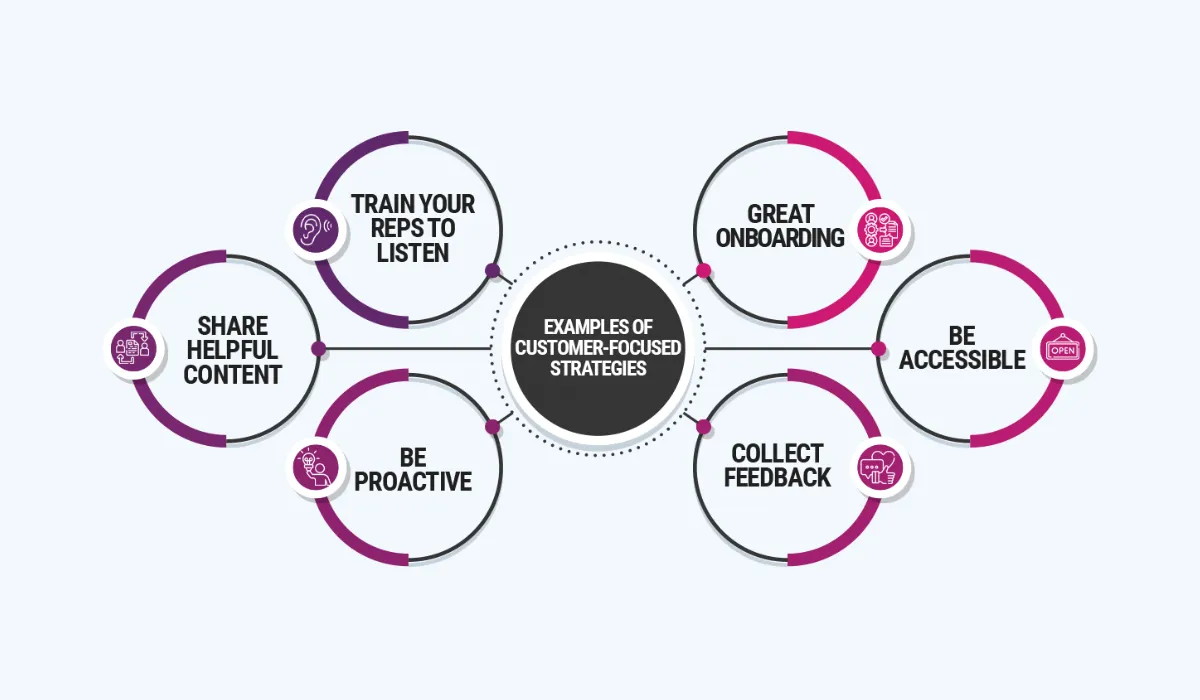
For example, a retailer might invest in a state-of-the-art eCommerce platform and sophisticated mobile apps but fail to consider how these tools fit into the everyday lives of their target demographic. If the digital experiences do not seamlessly connect with in-store experiences, or if they ignore the specific preferences and behaviors of their customer base, the result can be low adoption and engagement rates. This type of oversight can lead to significant disillusionment among customers, who may feel that the brand does not understand their needs or expectations, ultimately pushing them towards more responsive competitors.
Failure to Align Omnichannel Strategy with Brand Mission
Another critical strategic misstep is the failure to align the omnichannel strategy with the brand’s overall mission. This alignment is crucial for maintaining a consistent brand message and identity across all channels, which helps in building trust and loyalty among customers. When there is a disconnect, it not only confuses customers but also dilutes the brand’s impact.
For instance, if a luxury fashion brand known for exclusive services and high-touch customer interactions tries to implement a broad omnichannel strategy that includes a heavy push into automated, self-service digital channels, it may conflict with the brand’s core mission of personalized luxury service. Customers accustomed to high levels of personal attention might feel neglected or undervalued when pushed to interact more frequently with impersonal digital platforms. This kind of strategic misalignment can be a prominent example of omnichannel failure, where the attempt to expand capabilities actually ends up compromising the brand’s integrity and customer loyalty.
Organizational Challenges and Cultural Resistance
The Impact of Organizational Structure on Omnichannel Success
A company’s organizational structure can either facilitate or hinder the seamless integration of omnichannel strategies. In many cases of omnichannel failure, a company’s rigid, siloed structure significantly impacts its ability to implement effective omnichannel initiatives. When departments such as marketing, sales, and customer service operate in isolation without a cohesive strategy that crosses these boundaries, inconsistencies in customer experience often arise.
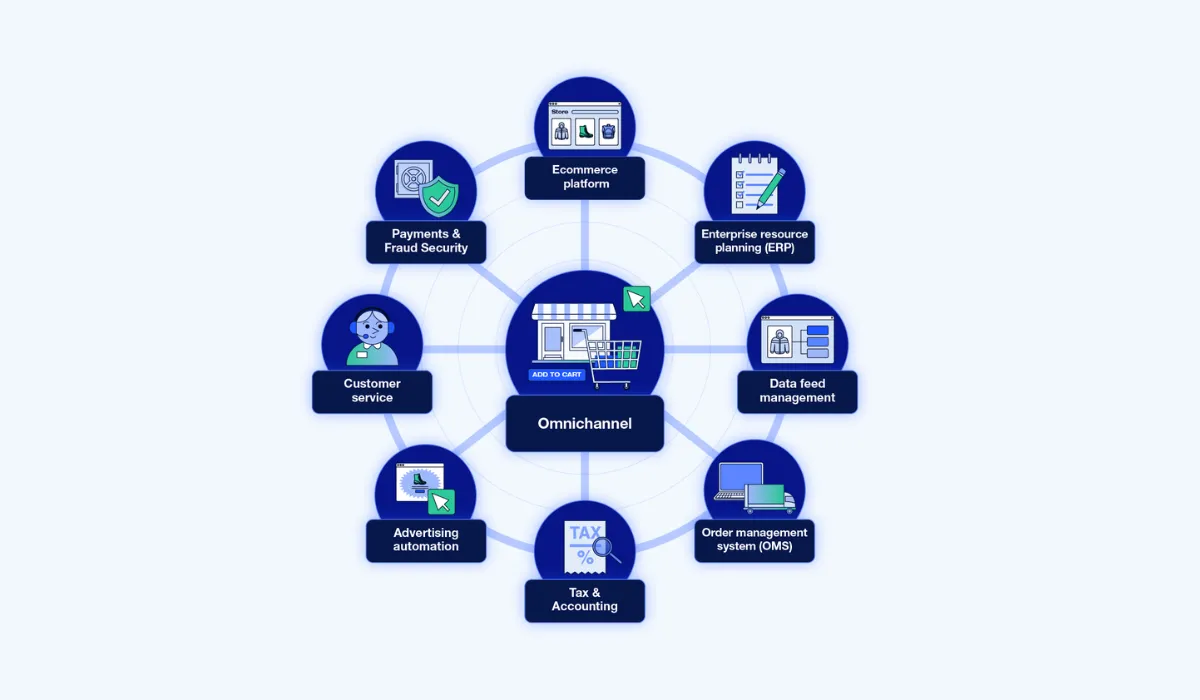
For instance, if the eCommerce team is not in sync with the brick-and-mortar store operations, a promotion available online may not be honored in-store, leading to customer frustration and diminished brand loyalty. Furthermore, a siloed structure typically slows down the flow of information and decision-making processes, making it challenging to respond swiftly to market changes or customer feedback. This lag can result in missed opportunities and an inability to capitalize on customer interactions effectively, underlining this organizational flaw as a classic omnichannel failure example.
Resistance to Change within Companies
Resistance to change is another significant barrier that can derail omnichannel strategies. This resistance often stems from a deep-rooted adherence to traditional ways of doing business and a reluctance to adopt new technologies or processes that are critical to omnichannel success. In many traditional retail environments, there is a perceptible hesitance among staff to shift from a familiar, established method of operation to a seemingly untested omnichannel approach. This resistance can originate from fear of the unknown, misunderstanding of the benefits, or concerns about increased workload.
An exemplary omnichannel failure example can be observed in companies where the leadership fails to fully endorse the omnichannel strategy. Without strong leadership support, initiatives often lack the necessary resources, such as training for staff or investments in new technology, leading to a half-hearted implementation that does not yield the expected benefits. Moreover, when employees do not feel empowered or equipped to manage new systems and interfaces, their resistance can lead to poor execution of the omnichannel strategy, creating disjointed customer experiences that erode trust and discourage loyalty.
Executional Missteps and Failure in Following Plan
Understanding Executional Missteps
For instance, a company might plan to integrate its online and offline inventory systems to allow customers the flexibility to see real-time stock levels at their nearest store on the website. However, if the implementation is handled poorly — perhaps due to insufficient training of in-store staff on how to update the system, or because of technical glitches that prevent accurate online display — customers may face the frustration of finding that products shown as available online are actually out of stock when they visit the store. Such situations directly result in customer dissatisfaction and are clear examples of omnichannel failures that stem from executional missteps.
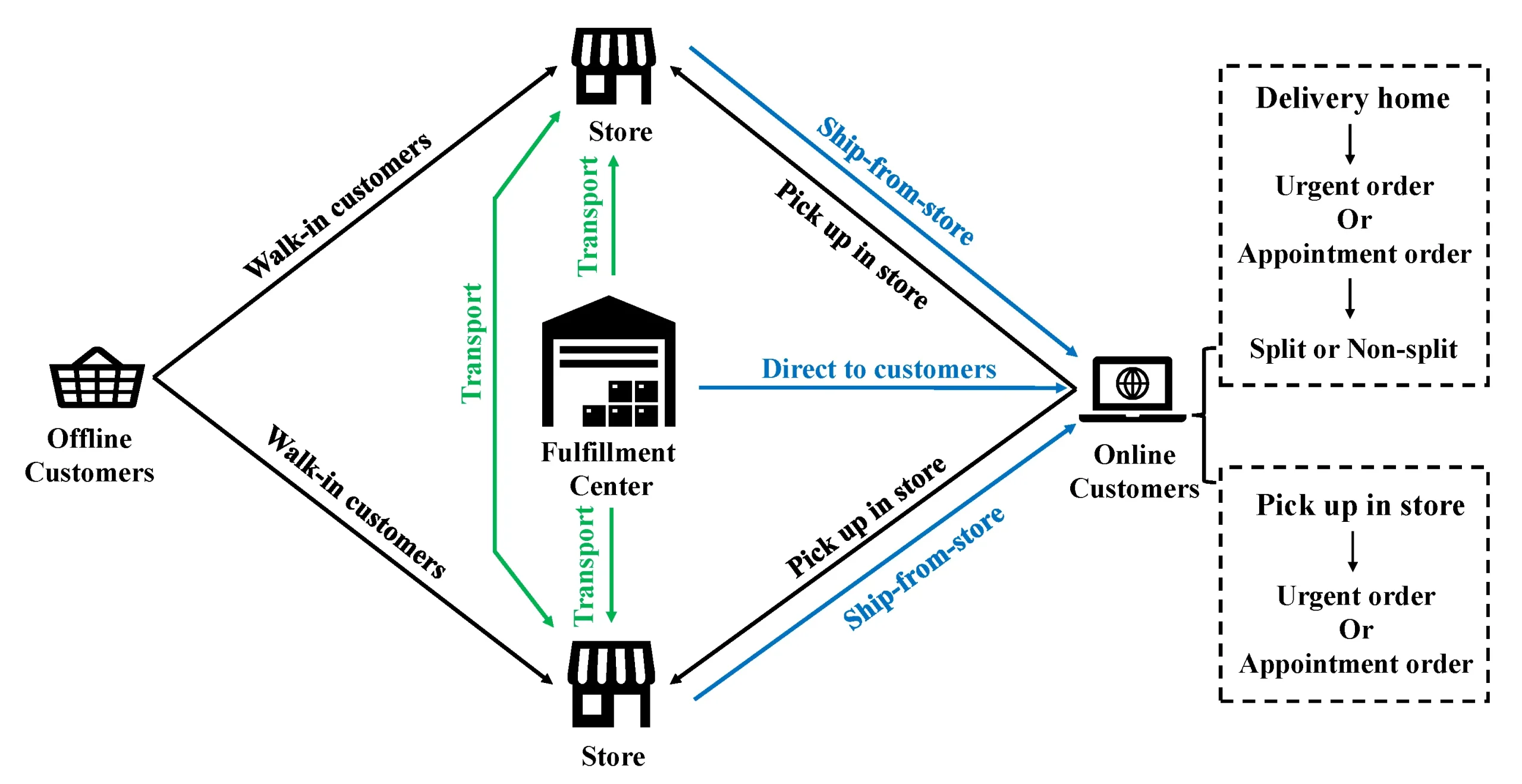
Executional missteps occur when the practical application of an omnichannel strategy fails to align with the planned guidelines or when there is a failure in the actual rollout of these strategies across various touchpoints. This can happen due to a range of factors including poor communication, inadequate resources, lack of staff training, and insufficient oversight. Each of these elements can severely disrupt the customer experience, leading to one of the many potential omnichannel failure examples.
Failure in Following the Plan
Closely related to executional missteps is the failure in following through with the planned omnichannel strategy. This type of failure can be particularly harmful as it often leads to incomplete or inconsistent customer experiences across channels. A common scenario might involve launching a new customer service platform that integrates social media, email, and telephone support to provide a seamless service experience. However, if the rollout is staggered improperly or if certain components are not fully functional at launch, customers might end up receiving disjointed service. This not only damages the brand’s reputation but also undercuts the trust and reliability customers expect from omnichannel interactions.
Another typical example of this failure occurs when businesses do not fully commit to the digital transformation required for omnichannel success. This might be seen in retail environments where the physical store staff are not adequately informed or convinced of the benefits of the omnichannel approach. As a result, they might not promote the cross-channel services effectively, or worse, they might inadvertently provide misinformation to customers, thereby undermining the entire omnichannel strategy.
The Impact of Executional Failures
The impact of these executional failures on customer experience can be profound. When customers encounter problems such as unavailability of products, inconsistent information across channels, or poor service interactions, their overall perception of the brand suffers. This leads to direct consequences such as loss of sales, negative word-of-mouth, and a decline in customer loyalty.
Moreover, the internal impact on the company can be just as significant. Executional failures often lead to wasted resources, both in terms of time and money spent on unsuccessful implementations. They can also demoralize staff, particularly if they are repeatedly asked to adapt to new, yet poorly executed, systems and processes.
Recovery and Rebuilding After Omnichannel Failures
Omnichannel failures can be daunting for any business, but they also provide valuable opportunities for learning and improvement.
Steps to Diagnose Issues and Reassess Strategies
The first step in recovering from omnichannel failure examples is to conduct a thorough diagnosis of the issues that led to the failure. This involves a detailed analysis of the entire omnichannel strategy to pinpoint where things went wrong. Companies need to assess whether failures were due to technological glitches, strategic misalignments, executional errors, or organizational culture issues. Advanced analytics, customer journey mapping, and internal audits can be instrumental in this phase.
Once the problems are identified, it is crucial to reassess and redefine the omnichannel strategy. This reassessment should focus on aligning the strategy more closely with customer needs and expectations, as well as ensuring that it fits well with the company’s operational capabilities and business goals. It may require overhauling certain processes, adopting new technologies, or even restructuring teams to better manage omnichannel tasks.
Implementing Feedback Loops with Customers and Frontline Staff
Implementing robust feedback loops with both customers and frontline staff is vital for continuous improvement. Customers can provide real-time insights into what is or isn’t working, making customer feedback tools such as surveys, focus groups, and online reviews critical components of any omnichannel strategy. Similarly, employees on the front lines — those who interact directly with customers across various channels — can provide invaluable insights into customer behaviors and the practical challenges of implementing omnichannel initiatives.

For example, regular training sessions and feedback mechanisms should be established to ensure that frontline staff can effectively communicate their observations and suggestions. These insights can then be used to refine the omnichannel strategy, ensuring it remains responsive to the needs of both customers and staff and is flexible enough to adapt to changing market conditions or consumer preferences.
Omnichannel Failure Examples of Businesses That Turned Around
Best Buy is a prime example of a business that turned around after initial omnichannel failures. Initially struggling with the rise of online retailing and the phenomenon known as ‘showrooming,’ where customers would browse items in-store but purchase them online at lower prices, Best Buy revamped its omnichannel approach. By matching online prices, enhancing customer service, and integrating in-store and online shopping experiences, Best Buy transformed its business model and re-established itself as a leading electronics retailer.

Target also provides a notable case study in recovering from omnichannel missteps. After a disastrous expansion into Canada and a significant data breach, Target refocused its efforts on enhancing its digital strategy and integrating it more effectively with its physical stores. Improvements included overhauling their inventory management system, enhancing their mobile app, and introducing more flexible fulfillment options like curbside pickup, which helped to regain customer trust and strengthen their market position.
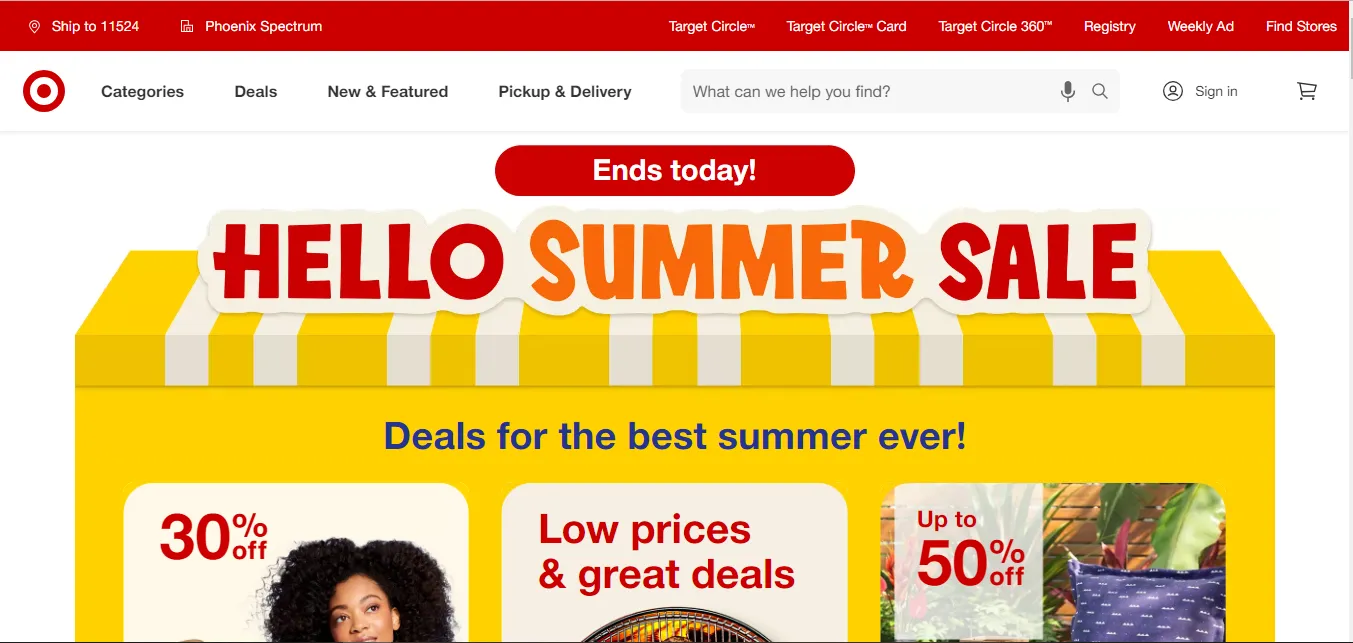
Nordstrom faced challenges with integrating its online and physical store experiences but turned things around by investing heavily in technology and staff training. The company focused on providing a seamless shopping experience whether online or in-store, enabling features like online order pickup in their physical locations and providing personalized shopping recommendations, thus successfully overcoming their initial omnichannel hurdles.

These examples illustrate that while initial failures in omnichannel strategies can pose significant challenges, businesses that are willing to innovate, invest in technology, and focus on customer experience can successfully turn their fortunes around and thrive in a competitive market.
Best Practices for Avoiding Omnichannel Failures
This section will provide a summary of key takeaways, essential practices for omnichannel success, and final thoughts on the importance of embracing change and continuous improvement in the ever-evolving retail landscape.
Strategic misalignments, technological glitches, executional errors, and organizational culture issues are prominent themes behind many failures. Each category sheds light on the importance of comprehensive planning, customer-centric approaches, robust technology integration, seamless execution, and an adaptable organizational culture.
- Integrate Customer-Centric Approaches: Always place the customer at the core of the omnichannel strategy. This means understanding and mapping the customer journey extensively to ensure all touchpoints are useful, convenient, and enjoyable for the customer.
- Ensure Robust Technological Integration: Invest in the right technology to seamlessly connect all channels. This includes a reliable IT infrastructure, real-time data analytics, and CRM systems that can effectively sync customer data across online and offline platforms.
- Foster Interdepartmental Collaboration: Break down silos within the organization to ensure that information and strategies flow freely across all departments. This enhances the ability to execute a unified omnichannel strategy effectively.
- Continuous Training and Development: Regularly train staff on the latest technology and customer service practices to ensure they are well-equipped to handle the dynamic requirements of omnichannel platforms.
- Implement Flexible Fulfillment Options: Enhance customer satisfaction by offering flexible and efficient fulfillment options such as buy online, pick up in-store (BOPIS), and hassle-free returns across any channel.
- Embrace Data-Driven Decision Making: Leverage data analytics to gain insights into customer preferences and behavior. Use this data to adapt and personalize the shopping experience across channels.
- Monitor Performance and Gather Feedback: Continuously monitor the performance of omnichannel strategies and solicit feedback from customers and staff. This feedback loop is crucial for identifying areas of improvement and innovation.
The digital landscape is constantly evolving, and so are customer expectations. Embracing change and striving for continuous improvement are essential for staying relevant and competitive in the omnichannel space. Businesses must be agile, and always ready to adapt their strategies in response to new technologies, market trends, and customer needs. This mindset not only helps avoid the pitfalls highlighted in our omnichannel failure examples but also drives innovation and growth.
In conclusion,
While the path to omnichannel excellence is fraught with potential obstacles, the key to navigating this path successfully lies in our response to these challenges. Let these omnichannel failure examples serve as both a warning and an inspiration. By embracing change, seeking continuous improvement, and learning from past failures, businesses can not only avoid common pitfalls but also position themselves for greater success in the omnichannel arena.











